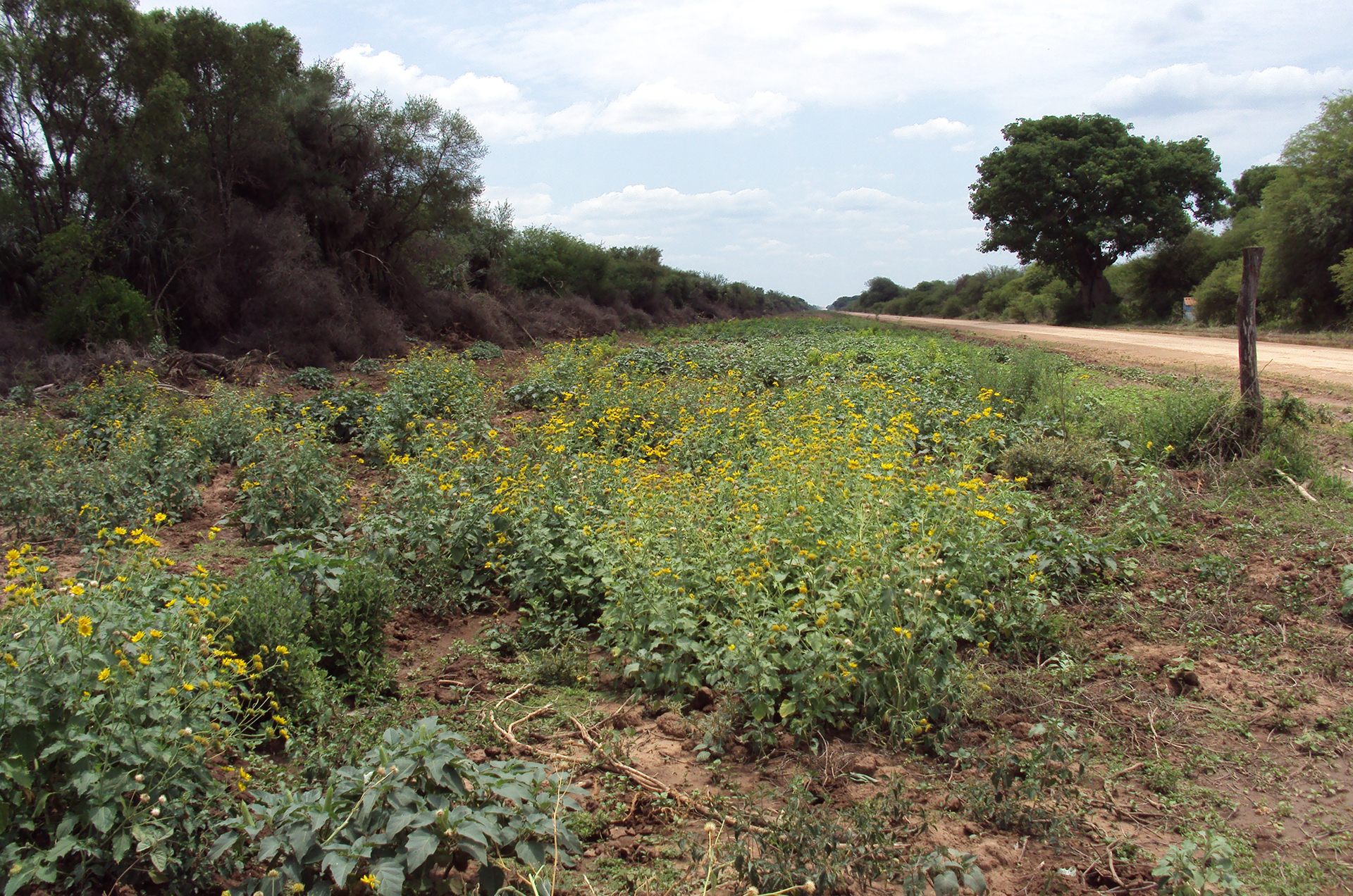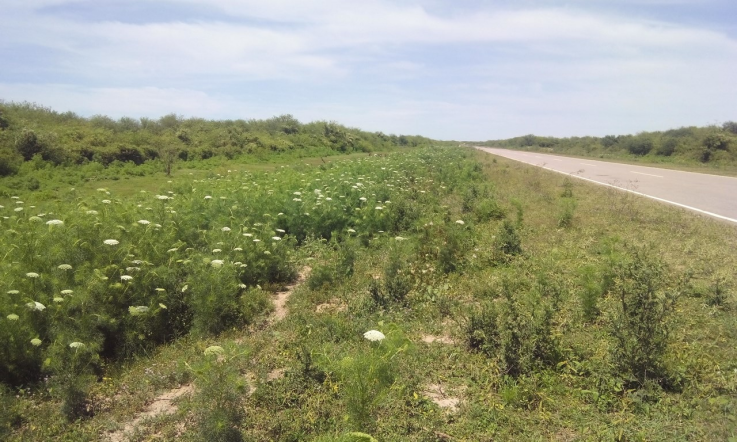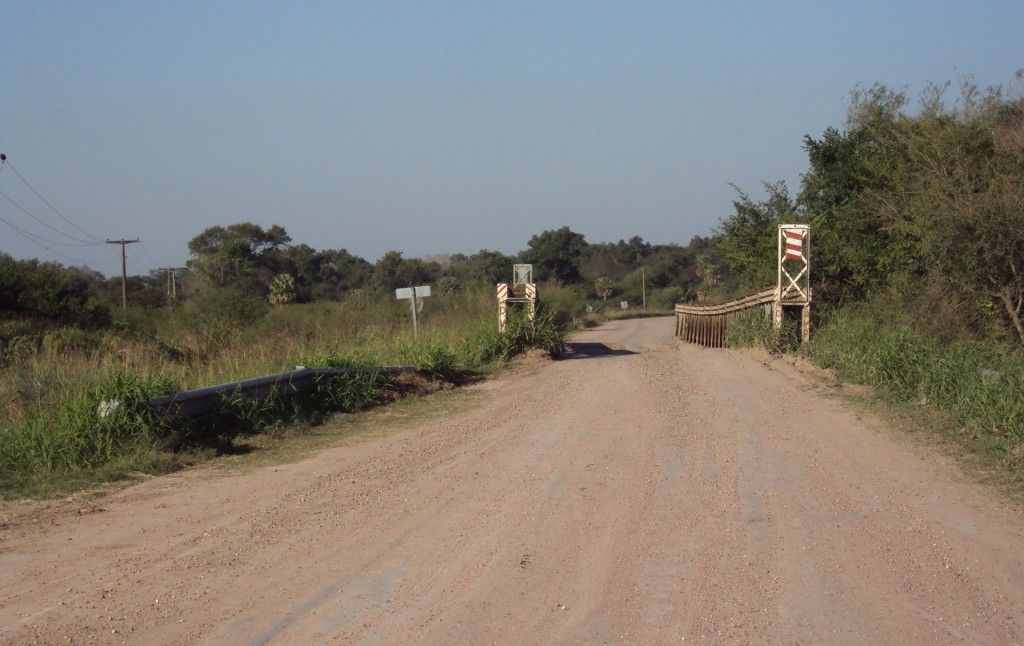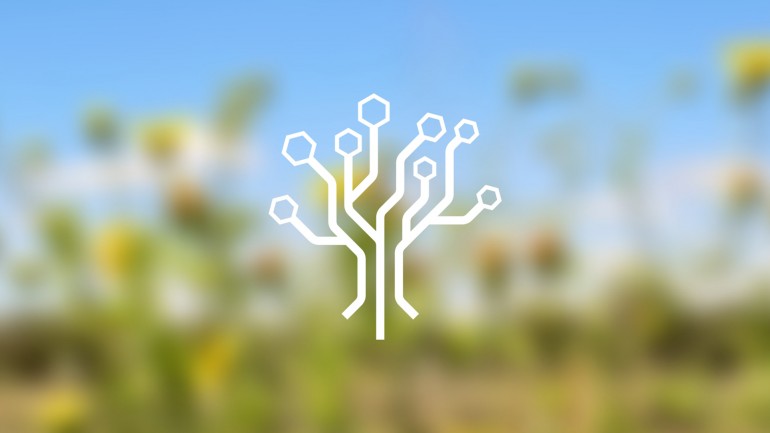Ammi visnaga growing with white flowers in Los Telares, Santiago del Estero.
Weeds: A Bio Factory for the Crop Protection Industry
Weeds grow. Whenever they are growing, they produce seeds and colonize the soil expanding their boundaries. Year by year tons of herbicides are used to control that fantastic mechanism to cover the soil without limits. With endless ambition weeds cover the soil no matter how hard we try to control them. They grow.
Sometimes weeds do not share the space they are using with other weeds. They grow as a monoculture occupying many hectares. We observe the same flowers, the same species, occupying large areas like ammi visnaga here in Argentina.
Ammi visnaga growing with white flowers in Los Telares, Santiago del Estero
It is very well known that some plant species release chemicals that inhibit the growing and seed germination of other species. But are those bio-chemicals-natural herbicides useful in the crop protection industry? Should we consider them as a true bio-herbicides? We decided 10 years ago to test this hypothesis. Here are the results.
The Method
Argentina is a long North-South extended country. We have the chance to cross many weather conditions including a semi desert in the North part of the country. Curiously, the semi desert has a forest.
We decided to cross all along the country collecting samples of plants in the field. We collected those plants growing in large areas forming patches that do not included other species in the patch. Every time we found this situation, we collected samples separating each organ as one sample. For instance, from every patch we collected leaves, stems, fruits, flowers, soils, in separated bags. Each one was a sample. In two years, we collected 2400 samples representing 800 plant species.
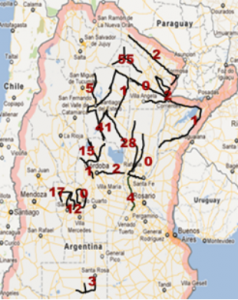
We prepared a water extract with each sample. We tested them in its ability to inhibit growing of seeds in the Petry dish. Of course, a lot of interesting results comes from this assay. But if we think in a commercial product, results must be tightening to an extremely strict criterion. Petri dish is easy to do and fast, but far to be the only one criterion to select an extract.
We also spraying the extract on weeds growing them in pots. We also see the mobility of the extract in the plant. At the end we have a good chance to select the top extracts to move to the next round to find an herbicide.
Following a criterion of “Go and No-Go” we reach to a few burn extracts from plant water extracts. We did purification from them and find the active molecules. X1 is one of them.

We not only find burn weed control herbicide, but it seems we found systemic one. We find a natural extract that kill the plant not as the burn herbicides do. It seems more a systemic herbicide. The effect is not immediate as the burn herbicides do, it takes a few days and the plant is killed.
Ammi visnaga produces 10 ton/ha/year of plant tissue. It will allow to produce 100.000 lts/ha/year of bio-herbicide. We must cultivate 1 ha to control 150ha of weeds. By now this is our ratio that will be improved soon.
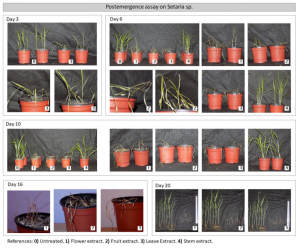
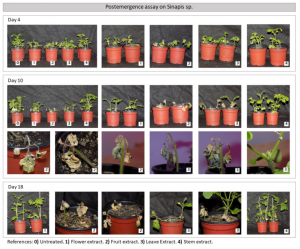
Spraying the weed plants with the water extract the weeds are killed in mostly almost two weeks.
Fungicide
We thought that not only herbicides can be found in plants but also fungicides. We tested our extracts against fungus and found a Phytophthora inhibitor from one weed that we applied on potatoes and tomatoes plants with good results. It is interesting that the water extract worked at the same concentration as the commercial product did.
The plant producing the fungicide extract grows abundantly. One hectare produces 100 tons of plant tissue. At 2.5kg/ha of the fungicide doses, the relationship is that one hectare of weed produces enough plant raw material to control phytophthora in 40.000ha of tomatoes/potatoes.

Insecticides and stimulants are also found in plants. We are now developing method to detect them in our samples.
A Global Business
It seems that those plant species we constantly kill or trying to kill in the field are a source of something good. What if we would decide to collect the weeds all around the world to find the best bio-chemicals for the crop protection industry? We established INBIOAR-Global LTD to collect samples of weeds in Chile, Paraguay, Perú, USA, Colombia, Australia, India, while we work in Argentina. We can apply our method in each country/region finding the best weeds to rank them with the purpose to be used in the crop protection industry.
Clean technology
How to commerce it? Extract will be decomposed in a few days if we plan to use them as a water extract in 20-liter plastic bottles. But we can dry the extract and store it in water soluble bags. For instance, in 5kg bags. Once in the field we add the bags in the water tank to prepare the extract. As a final step we add the formulated just before use it in the field.
In the preparation of the extract we only trash plant tissue. We can latter incorporate the plant tissue in the soil to improve the organic matter. If we consider preparing the extract in semi deserts it is not a bad idea to improve the soil with the organic trash.
Once in the field, the herbicide-powder bags are dropped in the water tank do not leaving behind a residue in the whole chain production-application. We understand with this line of work that Clean Agro concept can be improved with our development.
Future work
We imagine a better food production chain using clean chemicals to control pests. The environment is our frame we use to live, to produce, to work, to eat. We cannot make it dirty because we have our lives in it. We must care it for us and for the next generations coming. We work developing clean technologies transforming what is something bad in something good.
Fuente: AgroPages.com


